When I was 7 years old, I read my first Laura Ingalls Wilder books. I remember struggling with many of the words, like “soddie” and “half-pint” and the sense of danger that “Mr. Hanson” represented, but so extraordinarily captivating was the drama of these books that I persisted in sorting out the words, voraciously devouring them often when I didn’t really understand them.
Heroic adventure lay here, in the little sod house beneath the bank on Plum Creek. It was the 1870s. A family had come to an end in one place and needed to make a start in another one. They had nothing. They had each other. For a seven-year-old girl growing up in a family that wasn’t very safe, in which Mom and Dad didn’t take very good care of the kids, in which love was inconstant and attention could be punishing or shaming, a story about relying on your wits, on your own good sense, and most especially your sisters, a dog, and Ma and Pa, was archetypally attractive. I persisted with the words.
I found exemplars on every page. From the bulldog Jack, who taught me the grace and magical presence of animals in our lives, and the way we human beings learn from them and are transported and reconfigured by them;
To the father who recognized competence in a 7-year-old, and took her feelings and thoughts seriously;
To the mother who was thoughtful and wise, and who protected and treasured little girls;
To the little family who had to make it on their own…
To the illustrations by Garth Williams, who told an interviewer that he believed that “books, given or read, to children, can have a profound influence.” For that reason he used his illustrations to try to, “awaken something of importance, humor, responsibility, respect for others, interest in the world at large.”
To the magic of a prairie, and flowers that sang their glory, morning glories, on the roof of the little house.
The pages filled me with lust for adventure, and longing for what I did not have. Without realizing it at all then, and not until many decades later, this story became the narrative of my life, and has become the story of my life, calling out to me archetypally in ways that I did not understand at all, but was drawn to with incredible power.
Later, as a feminist critic and reappraiser, I read critiques of gender roles and nationalism embodied in these pages…
But to me then, the books were simply captivating.
And so my friend Audrey and I, the girl next door and my best friend, spent the next several years creating our own soddie house on the banks of the creek where we lived.
We transformed a mulberry bush into our sod house, and created a whole camp of white-washed walls and pretend fire places.
We made a dam in the stream and raked and “planted” our fields.


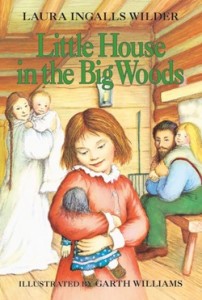
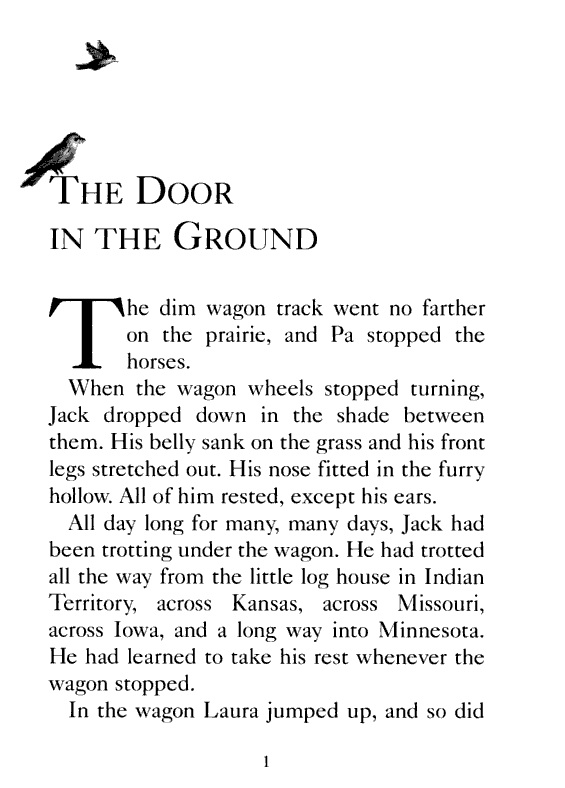
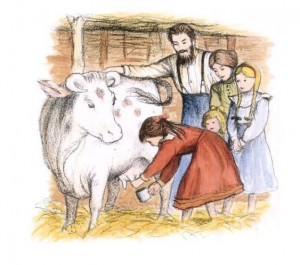
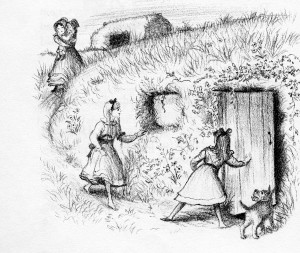
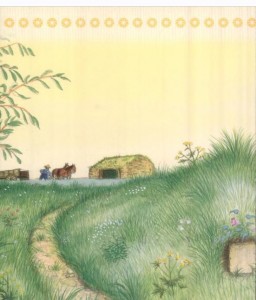

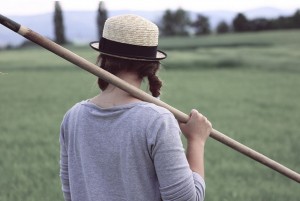

Indeed . . . well said.
love this post Kirsten.
love this:
During this early learning adventure, we were never supervised by an adult, had no learning goals attached to our reading or knowing, and our activities rarely had productive outcomes. We were obsessed, productive, happy.
I agree with Monika – “obsessed, productive, happy;” powerful close. In pursuit of “productive,” schools fracture “obsession” and dismiss – and oftentimes preclude – “happy.”
I want a classroom that welcomes all three things. I had been thinking about something like a homechool coöp, but I want my classroom to be the thing itself, not a supplement to it, not in the way some coöps are enrichment for academic learning at home.
It might be a pipe dream to pull this off in a public school, but I’m happy to go exploring in those pipes.
I acutely remember learning the word “mustang” from one of these books in my first “high” 2nd grade reading group, which seems to me eerily dissimilar from your experience, Kirsten.
Does joy in learning come from discovering and participating in our self-sufficieny in learning? From those times when no one is telling us that we can or can’t learn at this pace or that? Does it come from the deep safety we feel after taking the risk of tying to learn something we care about passionately? Does it come from complete freedom from judgment?
The admixture must differ for different people, but I look to safety, risk, passion, and freedom.
What do you think?
C
Kirsten,
You have no idea how much our children love the Little House on the Prairie books and TV show. On our 10 acre property, we do chores and have the fortune to have fiber optic to our house despite being 30 miles from the largest city. In the spring we tap maple sugar, the summer we plant gardens, build boats, play music, split logs, read stories, belong to a multi-age homeschool cooperative. On a daily basis my children set their own course of learning and we interact at times with love and caring mixed with frustration and yelling.
Under it all, and it is why Angie and I homeschool, we believe that true learning occurs in resource rich environments, when faith and trust of children build a relationship that supports autonomy, self mastery, and purpose. My children know the difference between needs and wants and how as a family we are constantly negotiating self-interest and family unity.
I wrote a similar post on our Homeschool Blog called:Harry Potter and Self-directed Learning. Here is the link: http://bit.ly/9aV94c. So much of the time in both Little House and Harry Potter, the real learning occurs sans adults. What would a school be like where the foundation of trust and community are established and kids learn with little direct instruction unless asked for by the kids? Can we turn schools into resource centers and end the unspoken daycare mentality.